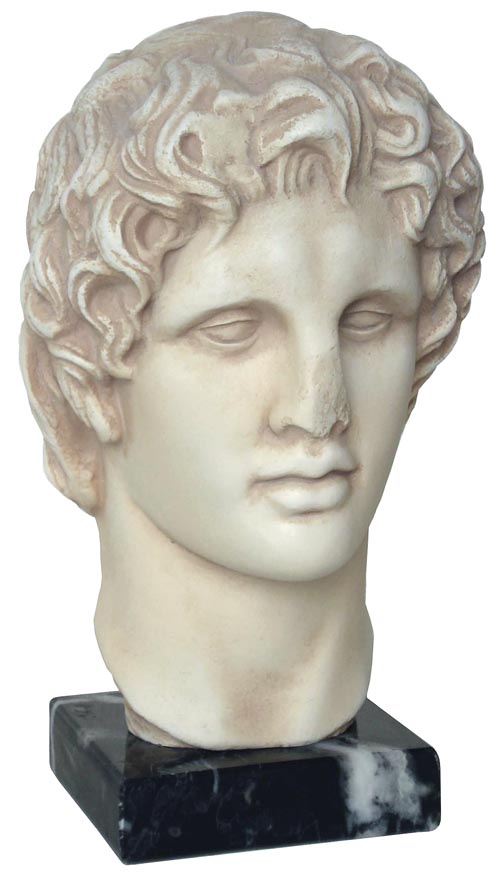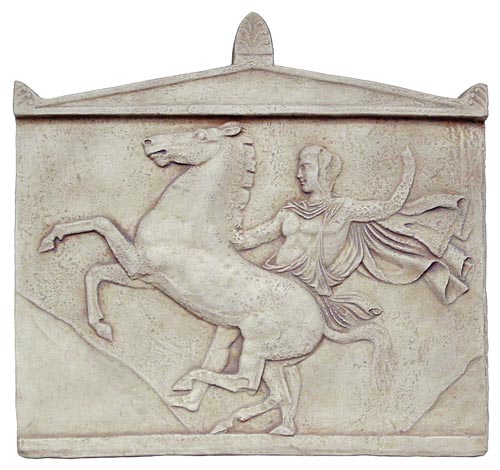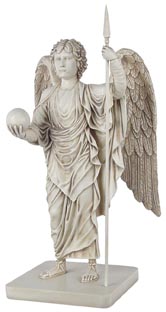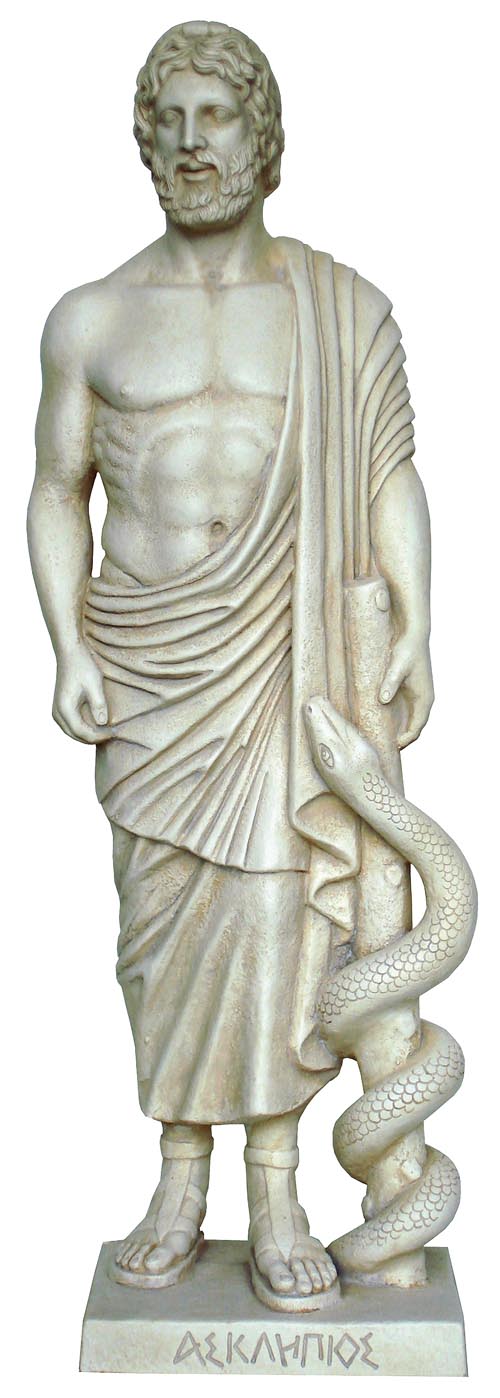Description
A caryatid is a female figure serving as an architectural element such as columns or pillars supporting an entablature on its head. They can be traced to ritual basins, ivory mirror handles from Phoenicia, and draped figures from archaic Greece. The best known examples are those of the six figures of the Caryatid Porch of the Erechtheion on the Acropolis at Athens. Our reproduction represents one of them. One of those original six figures, removed by Lord Elgin in the early 1800s, is now in the British Museum in London. The other five figures are in the Acropolis Museum. The Romans also copied the Erechtheion caryatids, installing copies in the Forum Augustum, the Pantheon, and Hadrian’s Villa at Tivoli. The male counterpart of a caryatid is known as a telamon or Atlas (plural, atlantes) “€œ the name refers to the legend of Atlas, who bore the world on his shoulders. A caryatid supporting a basket on her head is called a canephora, maidens who carried sacred objects used at feasts of the gods.







Reviews
There are no reviews yet.